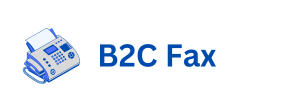Getting your website off the ground can be a huge feat. It takes a while to set up all the technical elements and get it designed and developed.
Your website can do a lot for your business, serving as the main point of contact online and promoting your site in different ways.
You may have already set up the basics of your website, but there are still many things you need to do after you launch your website to make sure it is set whatsapp blasting up correctly. You may have created the website yourself, or you may have had some help.
Either way, your work isn’t necessarily done just because your website is up and running.
After you celebrate the launch of the website as per your requirements Go-to-market strategy template, here are some things you should do next.
1. Continue working on SEO
SEO for your website is one of the most important things to consider. Hopefully, it is something you have considered during the design and execution of your website.
Now that you’ve launched your website, you’ll want to make sure all the basic SEO elements are in place, from title tags to keywords in your content. Even if you’ve got all the basics down, there’s still a lot to do.
2. Set up the analysis
Being able to monitor your site’s performance analytics and know what this tool is. is essential. You can track your number of visitors, where they come from, how long they stay on your site, and which pages they visit.
You can also track things like how many people contacted you and how much sales you made. Google Analytics is great for this purpose and can provide you with a ton of valuable data for free.
If you’re not sure how to do this, Analytics provides instructions, or you can ask your web developer for help.
3. Set up Google Search Console
Another very useful free Google tool is Google Search Console. It gives you more tools to focus on and improve your website’s performance.Google Search ConsoleHelps you “monitor, maintain, and troubleshoot your site’s presence in Google search results.”
You can use it to check if Google can crawl your site, find indexing issues, view traffic data, see which sites link to yours, troubleshoot mobile usability issues, and more. It’s an excellent tool for making sure your site is functioning properly and that you’re aware of any issues as soon as they occur.
Get familiar with how it works, connect your site, or if you’re not sure what to do, ask your site administrator to do it for you
4. Make sure your website is fast
Your website may look great and contain all the important information, but does it provide a good user experience? One of the most important things to consider in terms of user experience is yourWebsite speed. Not only does it affect whether people are able to use your website, it also affects your SEO ranking.
Testing your site’s speed will allow you to identify any potential issues that may need to be fixed. Of course, visiting your website to see it in action is a good start. But there are also tools available for measuring site speed.
5. Build your social media presence
Once you have launched your website, you have to promote it. One of the things you can do to market yourself and expand your online influence is to use social media.
If you’re not already using it for your business or website, it can help you increase visibility and brand recognition.
Before you get started, decide on the best social media channels to use. Not all of them will be right for your brand and audience, so consider whether Facebook or LinkedIn is really the right choice.
Be sure to develop a social media marketing dating data strategy to make the most of it. You can use organic marketing techniques and paid social media marketing to promote your brand andDrive more traffic to your website.
6. Set up some PPC ads
Another great way to promote your website is to look into PPC advertising. While organic SEO and social media will help you, generating any results from them can be a slow process.
PPC advertising can give you immediate results and is very simple to set up. Google Ads is one of the most popular options, but there are other platforms that use the PPC (pay per click) model, such as Facebook Ads.
This affordable marketing method allows you to pay every time someone clicks on your ad. This means that if no one clicks on it, it can be displayed as many times as needed without costing you anything.

